Long duration M3.7 flare erupts from Sun’s central region, CME to impact Earth on November 7
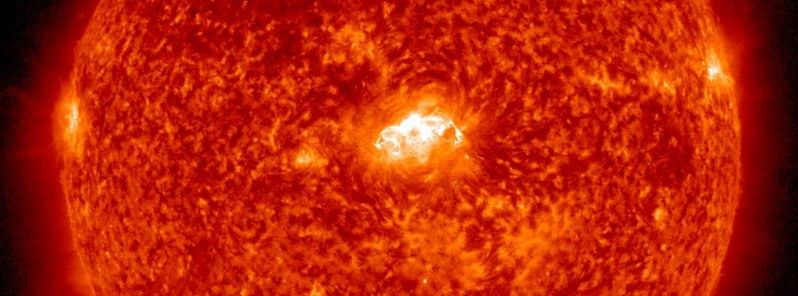
A long duration solar flare measuring M3.7 at its peak erupted from geoeffective Region 2443 at 13:52 UTC on November 4, 2015. The event started at 13:31 and ended at 14:13 UTC. Radio signatures suggest a Coronal Mass Ejection (CME) was produced.
The event was associated with with a Type II (estimated velocity 955 km/s) and a Type IV radio emissions. Type IV emissions occur in association with major eruptions on the Sun and are typically associated with strong CMEs and solar radiation storms.
Beta-Delta classified Region 2443 is located at the center of the disk today. Earth-directed CMEs are possible in the days ahead.
After M1.9 and M2.5 from Region 2445, this is third M-class solar flare of the day.
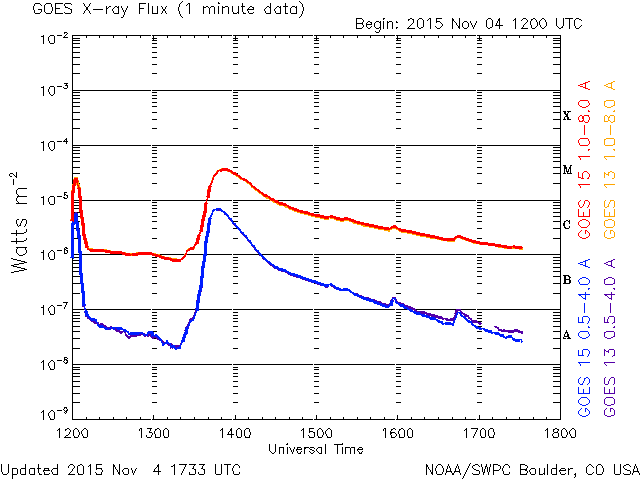
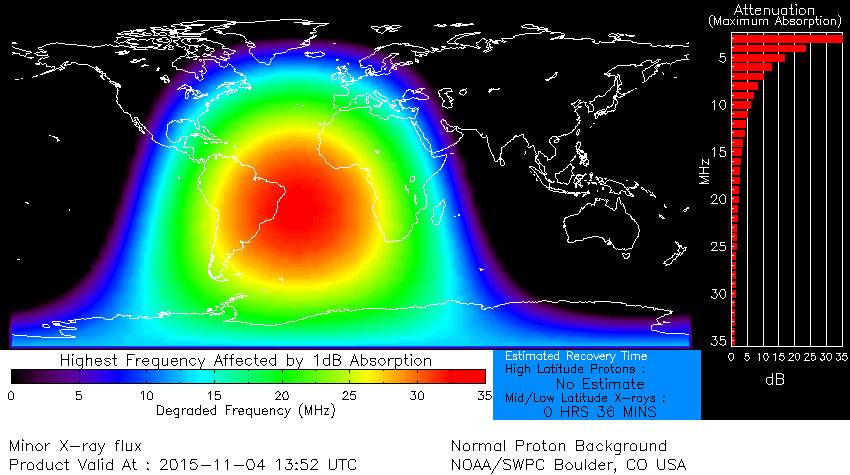
D-RAP at peak time of M3.7 solar flare.
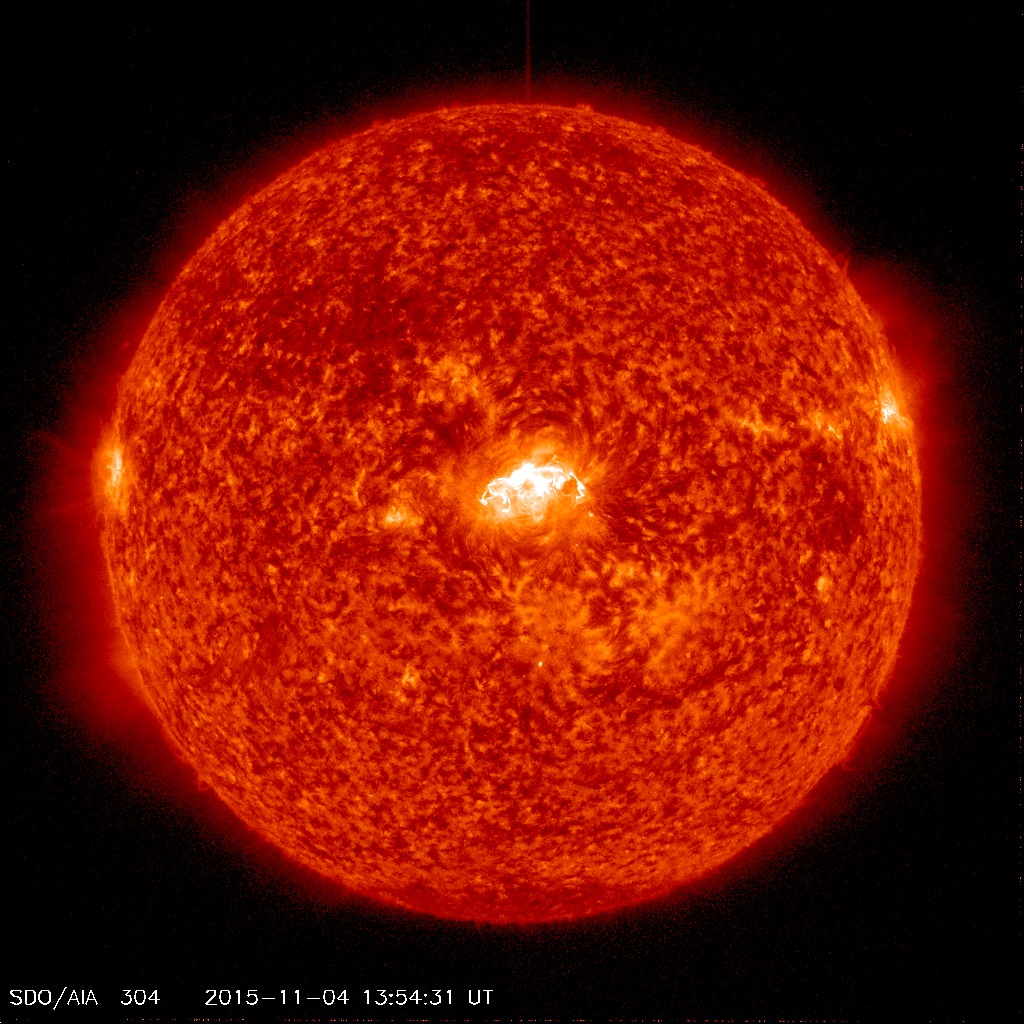
A CME was produced by this event and will most likely impact our planet in about 2 – 3 days.
M3.7 solar flare from sunspot region 2443 likely launched a CME. More at https://t.co/Vk8QoP78Hj pic.twitter.com/GjbDdAc5CV
— SpaceWeatherLive (@_SpaceWeather_) November 4, 2015
Update on M3.7 flare. Newly available LASCO data show the CME was not a full halo. Plane-of-sky speed only <500 km/s pic.twitter.com/Ox5sIDahVa
— Halo CME (@halocme) November 4, 2015
Update:
SWPC expects the CME to impact Earth on November 7, 2015:

Image credit: SWPC
Sunspots
There are currently 3 numbered sunspot regions on the Earth side of the Sun.
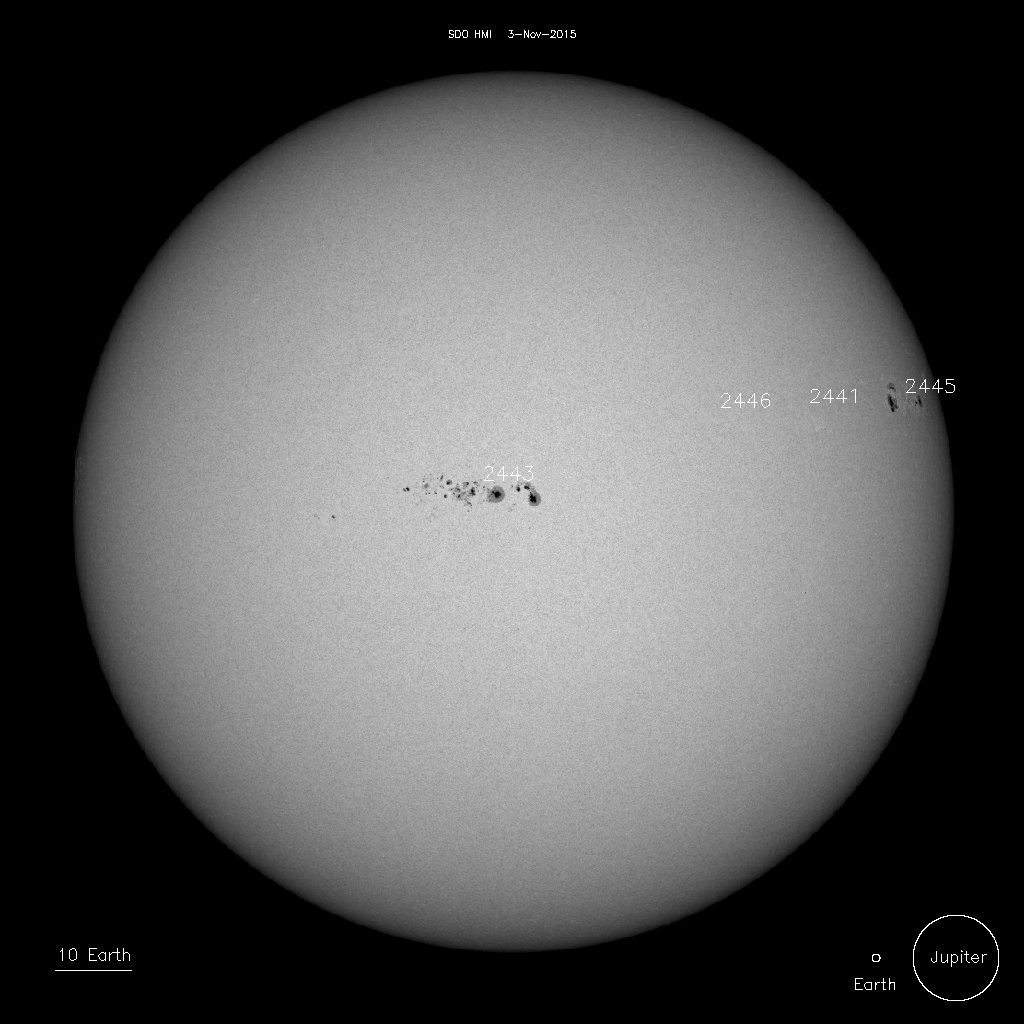
Sunspots on November 4, 2015. Image credit: NASA/SDO
2443 – Beta-Delta
2445 – Beta-Delta
2447 – Beta
SWPC alerts:
Space Weather Message Code: SUM10R
Serial Number: 675
Issue Time: 2015 Nov 04 1408 UTC
SUMMARY: 10cm Radio Burst
Begin Time: 2015 Nov 04 1338 UTC
Maximum Time: 2015 Nov 04 1341 UTC
End Time: 2015 Nov 04 1346 UTC
Duration: 8 minutes
Peak Flux: 290 sfu
Latest Penticton Noon Flux: 124 sfu
NOAA Space Weather Scale descriptions can be found at
www.swpc.noaa.gov/noaa-scales-explanation
Description: A 10cm radio burst indicates that the electromagnetic burst associated with a solar flare at the 10cm wavelength was double or greater than the initial 10cm radio background. This can be indicative of significant radio noise in association with a solar flare. This noise is generally short-lived but can cause interference for sensitive receivers including radar, GPS, and satellite communications.
***
Space Weather Message Code: ALTTP2
Serial Number: 1031
Issue Time: 2015 Nov 04 1410 UTC
ALERT: Type II Radio Emission
Begin Time: 2015 Nov 04 1343 UTC
Estimated Velocity: 955 km/s
NOAA Space Weather Scale descriptions can be found at
www.swpc.noaa.gov/noaa-scales-explanation
Description: Type II emissions occur in association with eruptions on the sun and typically indicate a coronal mass ejection is associated with a flare event.
***
Space Weather Message Code: ALTTP4
Serial Number: 518
Issue Time: 2015 Nov 04 1412 UTC
ALERT: Type IV Radio Emission
Begin Time: 2015 Nov 04 1351 UTC
NOAA Space Weather Scale descriptions can be found at
www.swpc.noaa.gov/noaa-scales-explanation
Description: Type IV emissions occur in association with major eruptions on the sun and are typically associated with strong coronal mass ejections and solar radiation storms.
***
Space Weather Message Code: ALTEF3
Serial Number: 2266
Issue Time: 2015 Nov 04 1420 UTC
ALERT: Electron 2MeV Integral Flux exceeded 1000pfu
Threshold Reached: 2015 Nov 04 1405 UTC
Station: GOES-13
NOAA Space Weather Scale descriptions can be found at
www.swpc.noaa.gov/noaa-scales-explanation
Potential Impacts: Satellite systems may experience significant charging resulting in increased risk to satellite systems.
***
Space Weather Message Code: SUM10R
Serial Number: 676
Issue Time: 2015 Nov 04 1453 UTC
SUMMARY: 10cm Radio Burst
Begin Time: 2015 Nov 04 1421 UTC
Maximum Time: 2015 Nov 04 1425 UTC
End Time: 2015 Nov 04 1433 UTC
Duration: 12 minutes
Peak Flux: 180 sfu
Latest Penticton Noon Flux: 124 sfu
NOAA Space Weather Scale descriptions can be found at
www.swpc.noaa.gov/noaa-scales-explanation
Description: A 10cm radio burst indicates that the electromagnetic burst associated with a solar flare at the 10cm wavelength was double or greater than the initial 10cm radio background. This can be indicative of significant radio noise in association with a solar flare. This noise is generally short-lived but can cause interference for sensitive receivers including radar, GPS, and satellite communications.
Featured image: NASA SDO/AIA 304 at 13:53 UTC on November 4, 2015.

i need neWs on 2nd sun,and this is awesome